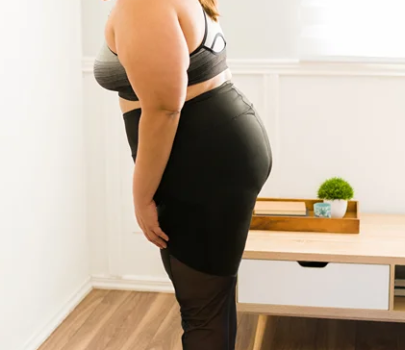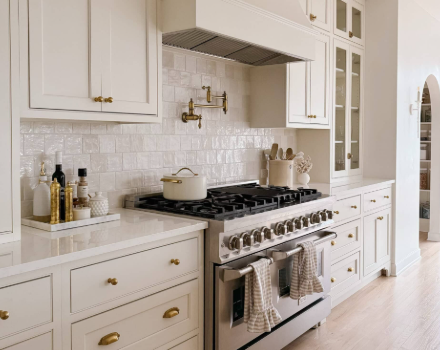
Are you looking to elevate your outfits and give them that “wow” factor? The secret might lie in the textures you choose to mix. Combining different fabrics is an easy way to add depth, visual interest, and personality to your outfits. Whether you’re dressing for work, a night out, or casual wear, mixing textures can take your wardrobe from ordinary to extraordinary.
Why Mixing Textures Works
Mixing fabrics is more than just a styling trick—it’s a way to elevate your entire look. Adding different textures creates dimension, making your outfit feel dynamic and thoughtfully put together. Here’s why mixing textures can be a game-changer for your wardrobe:
- Visual Interest: Pairing contrasting fabrics, like lace with denim or leather with wool, adds excitement and draws attention.
- Adds Depth: Single-fabric outfits can sometimes feel flat. Mixing textures breaks that monotony, giving your look more complexity and richness.
- Unique Style: By experimenting with different fabrics, you can curate a look that’s distinctly yours, allowing you to stand out and express your personal style.
- Seasonal Flexibility: Whether it’s cozy knits for winter or light chiffon for summer, texture mixing works year-round, adapting to the weather while keeping your outfits fresh.
Understanding Fabric Textures
Before you start combining different fabrics, it’s important to understand the types of textures available. Here’s a breakdown of common fabric textures:
- Smooth: Fabrics like silk, satin, and cotton.
- Rough: Textures such as tweed, canvas, and burlap.
- Textured: Velvet, corduroy, and brocade fall into this category.
- Soft & Cozy: Cashmere, fleece, and knit fabrics.
- Sheer: Light fabrics like chiffon, lace, and organza.
Knowing these categories will help you confidently mix and match fabrics, much like a painter blending different colors to create a masterpiece.
How to Pair Fabrics That Work Together
Not all textures mesh well together, so it’s important to create balance. Pairing a heavy fabric with something lighter often works better than layering two thick fabrics. Here are some tips to help you choose the right combinations:
- Balance Weight: Pair heavier fabrics, like a chunky knit sweater, with lighter, flowy fabrics, such as a silky skirt.
- Consider the Occasion: While a sequin blazer and velvet jumpsuit might sound like a fun mix, it’s best saved for an evening event rather than a casual brunch.
- Natural Pairings: Leather and denim, linen and cotton—they naturally complement each other, so these fabrics are a safe bet when you’re just starting to experiment.
- Visual Check: Before committing to a combination, lay the fabrics side by side or try them on to see if they complement each other.
Tips for Mixing Fabrics Like a Pro
Now that you have a basic understanding of fabric types and how they work together, it’s time to have fun! Here are a few tips for successfully mixing textures in your outfits:
- Start with One Statement Texture: Choose one bold fabric, like a velvet skirt or denim jacket, and let it be the focal point. Add supporting textures that complement it.
- Stick to a Color Palette: Keeping your colors consistent will make texture mixing more cohesive. Neutral tones or monochromatic schemes can help tie everything together.
- Layering Is Key: Layering different fabrics is an easy way to mix textures. Think a lace dress with a leather jacket or a silk camisole under a chunky cardigan.
- Try Accessories: If you’re not ready to dive into full-texture mixing, start small with accessories like a velvet bag, suede shoes, or a fuzzy scarf to add dimension without overwhelming your outfit.
- Play with Proportions: Pair slim, fitted pieces with oversized items. For example, a delicate chiffon blouse looks stunning with wide-leg corduroy pants. The contrasting proportions add another layer of interest.
Popular Texture Combinations
Looking for some inspiration? Here are a few classic and stylish texture pairings that always work:
- Leather and Lace: This combination blends the rugged, edgy nature of leather with the delicate femininity of lace.
- Denim and Silk: Casual meets elegant—pair a silk top with your favorite denim for a chic yet effortless vibe.
- Knits and Satin: Cozy and elevated, this combo is perfect for colder months. A chunky knit sweater pairs beautifully with a satin slip skirt for a unique look.
- Velvet and Brocade: Luxe on luxe! These rich, textured fabrics are perfect for eveningwear or formal events.
- Tweed and Cotton: A structured tweed skirt paired with a simple cotton tee strikes a perfect balance between polished and laid-back.
Common Mistakes to Avoid
Even the most seasoned fashion lovers can make mistakes when mixing textures. Here are some common pitfalls and how to avoid them:
- Overloading on Textures: Too many different textures can overwhelm your outfit. Stick to two or three textures for a more balanced and polished look.
- Poor Fit: No matter how great your fabric combinations are, ill-fitting clothes can ruin the entire outfit. Focus on finding the right fit before worrying about textures.
- Seasonal Fabrics: Certain fabrics are better suited for specific seasons. Avoid heavy knits in summer or lightweight linen in winter.
- Too Many Prints: Mixing prints with textures can be tricky. Anchor your outfit with a neutral piece to avoid creating visual clutter.
Conclusion
Mixing textures is an easy and effective way to add personality, depth, and flair to your wardrobe. By experimenting with different fabric combinations, you can transform even the simplest outfit into something extraordinary. So don’t be afraid to step outside your comfort zone—play with textures and create outfits that express your unique style!

















